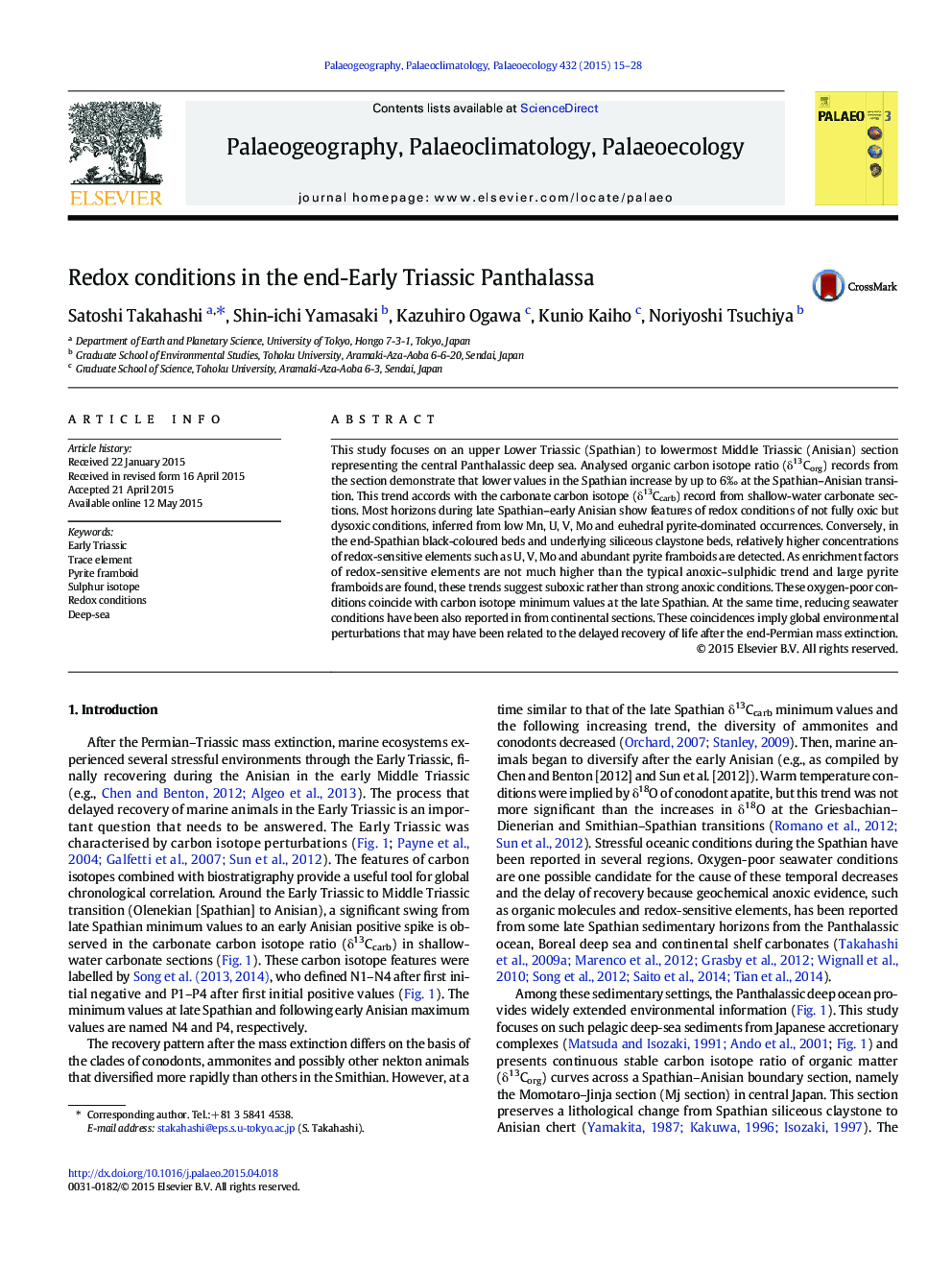| کد مقاله | کد نشریه | سال انتشار | مقاله انگلیسی | نسخه تمام متن |
|---|---|---|---|---|
| 4465883 | 1622158 | 2015 | 14 صفحه PDF | دانلود رایگان |

• Organic carbon isotope ratio in the Spathian–Anisian section from pelagic Panthalassa
• Continuous data of redox-sensitive elements and sulphide mineral occurrences
• Successful correlation between the sections from pelagic Panthalassa and Palaeotethys
• Development of suboxic depositional condition at the late Spathian Panthalassa
• Co-occurrence of reducing seawater at the late Spathian in the continental areas
This study focuses on an upper Lower Triassic (Spathian) to lowermost Middle Triassic (Anisian) section representing the central Panthalassic deep sea. Analysed organic carbon isotope ratio (δ13Corg) records from the section demonstrate that lower values in the Spathian increase by up to 6‰ at the Spathian–Anisian transition. This trend accords with the carbonate carbon isotope (δ13Ccarb) record from shallow-water carbonate sections. Most horizons during late Spathian–early Anisian show features of redox conditions of not fully oxic but dysoxic conditions, inferred from low Mn, U, V, Mo and euhedral pyrite-dominated occurrences. Conversely, in the end-Spathian black-coloured beds and underlying siliceous claystone beds, relatively higher concentrations of redox-sensitive elements such as U, V, Mo and abundant pyrite framboids are detected. As enrichment factors of redox-sensitive elements are not much higher than the typical anoxic–sulphidic trend and large pyrite framboids are found, these trends suggest suboxic rather than strong anoxic conditions. These oxygen-poor conditions coincide with carbon isotope minimum values at the late Spathian. At the same time, reducing seawater conditions have been also reported in from continental sections. These coincidences imply global environmental perturbations that may have been related to the delayed recovery of life after the end-Permian mass extinction.
Journal: Palaeogeography, Palaeoclimatology, Palaeoecology - Volume 432, 15 August 2015, Pages 15–28